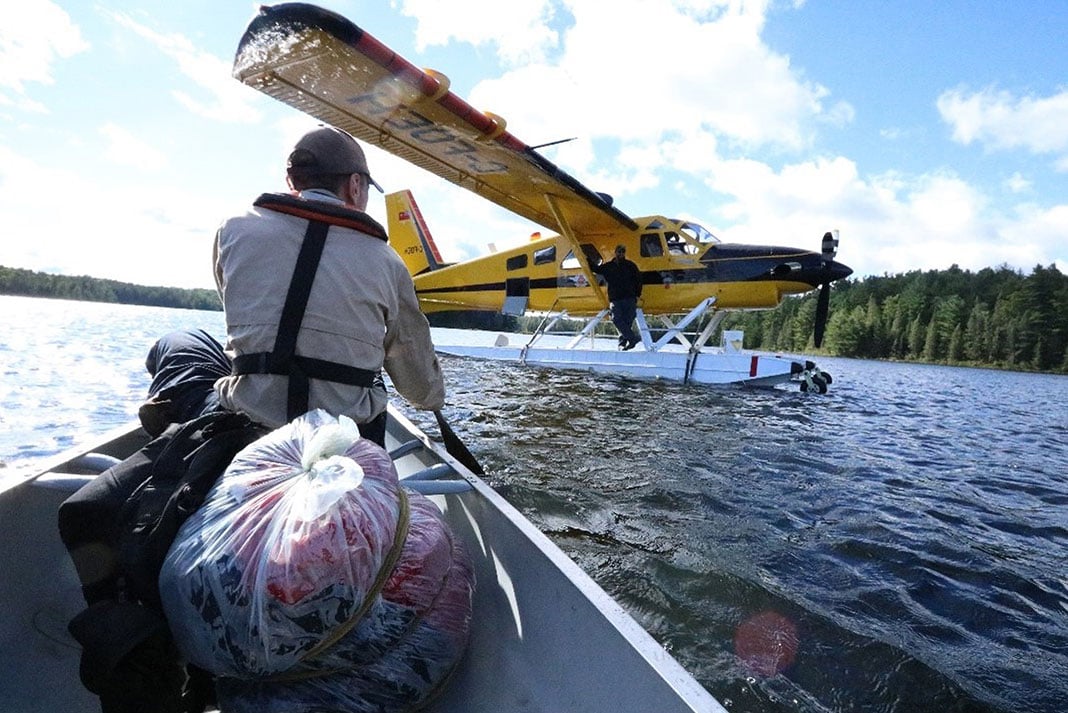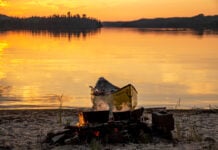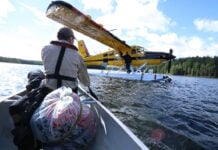Last fall, I was driving home from a presentation in a northern town when it became obvious my long drive wasn’t going as planned. Construction delays, traffic jams and I was getting sleepy. Very sleepy. So, I chose to check in at a cheap roadside motel for the night. It was the safe thing to do.
I had no reservations. I just pulled into the first run-down motel I came to. It felt spontaneous, like a John Wayne western—riding all day and sleeping wherever the wilds of the Rio Grande allowed. The small, unplanned act filled me with a sense of freedom.
That is until I saw the No Vacancy sign.
Even the open road—that last bastion of freedom—now demands a reservation. Gone are the days when you could set off on a whim.
Adventure is being planned out of existence
I soldiered on by turning up the music and rolling down the car window a crack. But sometime between Tom Petty’s “Runnin’ Down a Dream” and Gordon Lightfoot’s “Carefree Highway,” a bulky moose blocked the roadway. I swerved into the ditch, narrowly missing the moose. I ended up sleeping in my car.
Groggy the next morning, my road trip disaster got me thinking about how reservation systems are creeping in everywhere, shaping how we travel and adventure. Case in point: the French River Provincial Park, a backcountry area I’ve paddled for decades. In November, Ontario Parks announced the park would move to a site-specific reservation model for all backcountry paddling campsites. Instead of reserving a maximum of two weeks in advance in large “zones” and not being sure exactly where you would sleep, paddlers can now book specific campsites up to five months in advance—complete with photos.

Nothing says wilderness adventure like previewing your tent pad on a smartphone.
Site-specific reservations aren’t new. Many busy backcountry parks use them. For northern parks with fewer visitors, like Quetico, you can still roam freely, stopping wherever you please—just like it’s always been.
The change comes because the French River is getting busy. User satisfaction was dropping as paddlers spent hours searching for—or racing to—open campsites. For many, site-specific reservations seemed necessary. The policy change might reduce campsite conflicts, give more campers peace of mind, and help park officials crack down on litter and unsafe campfires.
But while these changes aim to improve, they fundamentally shift the wilderness experience into something less wild. They erase the joy of adapting to conditions and roaming. Worse, they increase the risk of paddlers pushing themselves too far, battling wind or waves to reach a reserved site. On the French, that risk is real—its lower reaches empty into Georgian Bay’s ocean-like waters.
This isn’t just a French River problem. Across North America, parks are changing regulations and reservation policies to manage growing tourism. U.S. national parks like Arches, Glacier, Rocky Mountain and others have implemented timed entry and day-use reservation systems to better control visitation while protecting natural spaces. While these reservations may improve user experiences when compared to the alternative, they also alter what it feels like to explore the landscape.
In retrospect, I should have planned my road trip better and booked a motel before setting out. These days, it’s foolish to travel without reservations. Maybe the same is true for wilderness tripping. The go-where-the-wind-takes-you mentality has faded, a relic of the past, like John Wayne and his horse.
Site-specific reservations cater to a world that craves convenience and certainty. But they strip away a central tenet of the backcountry: embracing the unknown. By trading unpredictability for security, we risk turning wilderness camping into another curated experience—a glossy brochure of what adventure used to be.
The days of pulling over at a motel—or pitching a tent wherever the river takes you—are slipping away. Trips are being booked months in advance, leaving spontaneity—and the spirit of adventure—sleeping in the ditch.
Kevin Callan is an internationally recognized authority on canoeing and the author of 20 books. His Butt End column is featured in every issue of Paddling Magazine.
Nice site. Hope you booked it five months ago. | Feature photo: Colin Field



 This article was published in Issue 73 of Paddling Magazine.
This article was published in Issue 73 of Paddling Magazine. 





I too was surprised when I first paddled the Sylvania Wilderness in Michigan’s Upper Peninsula and learned during trek planning that campsites were by reservation only. I realized then that not all wilderness areas are created equal, and Sylvania definitely wasn’t Boundary Waters. But I found a solution — I just won’t go to those places.
For me, there are plenty enough places I can go and the relatively minor irritation of the world changing around me is worth the corresponding satisfaction of seeing increasing numbers of people experiencing nature. Yes, it was odd watching a couple with their six- and eight-year-olds strolling past my Sylvania campsite with their picnic basket. But that a family can paddle into the wild, sleep in in the mornings, and meander to their next campsite in time for dinner knowing that it will be there for them is pretty cool.
Absolutely spot on observation. Too many people who do not take care of nature ruin adventure travel. When adventure paddling, adhering to a strict schedule defeats some of the spirit of adventure.
Fortunately a backcountry primitive campsite in most of New York’s Adirondack Park doesn’t require a reservation or a permit – it is first-come, first-served. I hope that never changes (at least not in my lifetime). Yes, when it’s peak season, at the most popular canoe camping destinations, there is a possibility of not getting a site or the one you planned on getting, but if you’re going to the most popular locations in peak season, you should expect that flexibility on your part is needed. That being said, in my 50+ years of camping in the Adirondacks I have never had a problem finding a site. Plus, in many (but not all) locations, you have the option to go 150 feet back from a road, trail or body of water and camp. Obviously, this type of camping requires some care, consideration and adjustments to limit your impact, but it’s good to know you have that option if needed. So there’s still “adventure” in backcountry camping in the Adirondacks; just try to avoid the most popular spots in peak season and have a backup plan or alternate location if that parking lot is overflowing and the put-in is a mob scene.
Surely this is all a function of increasing population and increasing desire to go camping and limited camping resources.
What would be your solution?
This is a test. My earlier comment got deleted or ignored!
Here’s a solution to this silly problem. Have your partner plan the route, book the sites, and not tell you anything. Then you will feel like your trip is more wild and exciting while also using the absolutely necessary (in some parks)reservation systems. Also the motel wasn’t full because of the reservation system, it was full because it was busy same as all these parks with similar systems. Adapt to the changing world or continue complaining while it burns.
I believe the underlying issue is that there are now way more people living in Ontario who want to camp in the backcountry and there has been no increase in backcountry infrastructure or provincial parks. For the not reserve in advance system to work – you need a lower ratio of people to sites..
But – the opposite has happened – Since the 1990s many parks scattered across the province have been closed or become ‘non-operational’ parks – deemed not feasible for maintenance. This includes not maintaining portages or backcountry sites. With the increased uptick in camping and outdoor pursuits and the increase in population it strikes me as crazy that so many parks and canoe routes that were maintained in the 80s (when the population was much smaller) no longer have maintained portages. In my mind this is a political problem – people voting for candidates who prioritize tax cuts over open spaces.